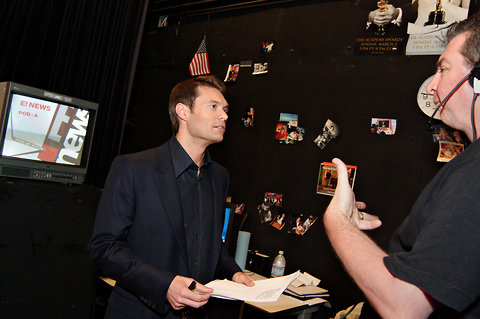In digital advertising, that formula is being increasingly tested by fast-paced, algorithmic bidding systems that target individual consumers rather than the aggregate audience publishers serve up. In the world of “programmatic buying” technologies, context matters less than tracking those consumers wherever they go. And that kind of buying is the reason that shoe ad follows you whether you’re on Weather.com or on a local news blog.
That shift is punishing traditional online publishers, like newspaper, broadcast and magazine sites, who are receiving a much lower percentage of ad dollars as marketers use programmatic buying across a much broader canvas. Some sites, like CNN.com, refuse to even accept advertising through programmatic buying because they do not want to cede control over what ads will appear.
“It’s allowing advertisers to assign value to media rather than publishers,” said Ben Winkler, the chief digital officer at OMD, an agency in the Omnicom Media Group. Publishers, he said, “can’t control the price, but they can control the quality of the content and the audience on that site.”
About 10 percent of the display ads that consumers see online have been sold through programmatic bidding channels, according to Walter Knapp, the executive vice president of platform revenue and operations at Federated Media, one of the world’s largest digital advertising networks.
Advertisers like Nike, Comcast, Progressive and Procter Gamble are now using the programmatic buying, and luxury advertisers are starting to follow. According to data from Forrester Research, all ads traded on exchanges, as programmatic ads are, increased more than 17.5 percent to about 629 billion impressions (the number of times an ad appears) in 2012, from 535 billion in 2011.
That growth is affecting publishers of all stripes, but few are willing to discuss their internal numbers. “For a publisher to admit they’ve been hurt is tough for the big guys,” said John Ebbert, the executive editor and publisher of the Web site AdExchanger.
When The New York Times Company announced its earnings last month, the company posted a profit, but said that digital advertising fell 2.2 percent. Jim Follo, the company’s senior vice president and chief financial officer, attributed the dip, in part, on a “shift toward ad exchanges, real-time bidding and other programmatic buying channels that allow advertisers to buy audience at scale.”
Programmatic buying began as a way for advertisers to place lower-cost ads for products like teeth-whitening products and belly fat pills that filled up the back pages of Web sites. But the practice has gained in sophistication and breadth, with major advertisers and many of the world’s largest ad agencies creating private exchanges to automate the buying and selling of ads.
Programmatic buying includes a number of different technologies and strategies, but it essentially allows advertisers to bid, often in real time, on ad space largely based on the value they have assigned to the consumer on the other side of the screen. Say, for example, that Nike wants to sell running gear to a particular consumer who has a high likelihood of buying shoes based on the data it has collected, including the type of Web sites that consumer typically visits. Because the ad-buying is done through computer trading, the price for that space can change rapidly.
“Accessing media is a commodity now,” said Sheldon Gilbert, the founder and chief executive of Proclivity Media, a company that specializes in digital advertising technologies. “Instead of having to commit four months in advance, you can now bid and buy an individual impression in real time.”
In the short run, the growth in programmatic buying has forced overall ad prices to fall. A media buyer who would have once spent $50,000 worth of advertising on a publisher’s site, at, say, an $8 cost-per-thousand, can now buy ad impressions on any Web site on which they happen to find their intended audience and pay less per ad, Mr. Ebbert said.
“There is no scarcity of premium online,” said Dan Salmon, an equity research analyst at BMO Capital Markets. “There’s only one Super Bowl, but there are lots of different places to buy banner ads online.”
While the “halo effect” of buying an ad against premium content has not disappeared entirely — many advertisers still want front-page placement on popular Web sites — the shift is prompting publishers to rethink how they sell their ads.
Clark Fredricksen, the vice president for communications at eMarketer, a data company, said that publishers were “going to have to double down to prove the value of their inventory as they compete with other, cheaper inventory.”
And some publishers are jumping into the game themselves. During the most recent AOL earnings call, Tim Armstrong, the company’s chairman and chief executive, said it was bullish on programmatic buying, despite being a publisher itself with properties that include TechCrunch and The Huffington Post. The company trades its ads through its own ad network, Ad.com, and others like it.
“We will continue to invest in people and technology to capture the programmatic business of advertising,” Mr. Armstrong said.
Like AOL, Weather.com is also aggressively moving into programmatic bidding. “Instead of thinking of us a publisher, think of us as a marketing engine,” said Curt Hecht, the chief global revenue officer for the Weather Company.
Neal Mohan, the vice president for product management at Google, which sells advertising though its DoubleClick network, says that in the long run, publishers could see higher returns from programmatic advertising. In the last year, the number of advertisers and publishers using the DoubleClick platform has doubled, Mr. Mohan said, while the rates for those using the platform have increased 11 percent. But that means publishers will have to play by different rules.
“Context still matters and so does placement,” Mr. Ebbert said. “But it’s only one element.”
Article source: http://www.nytimes.com/2012/11/16/business/media/automated-bidding-systems-test-old-ways-of-selling-ads.html?partner=rss&emc=rss
